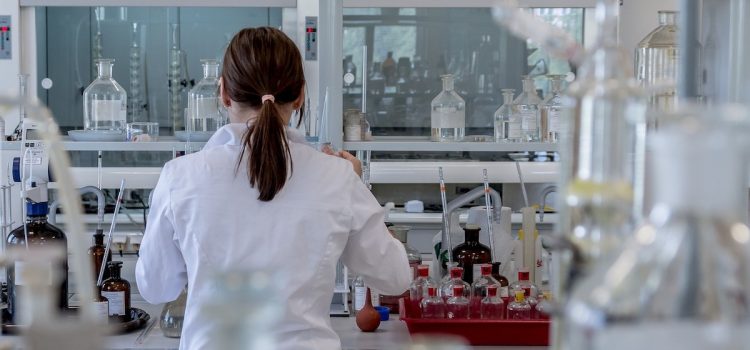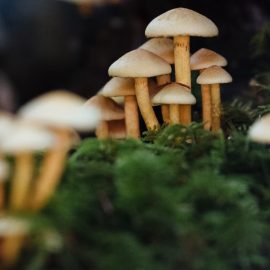

This article is an excerpt from the Shortform book guide to "A Short History of Nearly Everything" by Bill Bryson. Shortform has the world's best summaries and analyses of books you should be reading.
Like this article? Sign up for a free trial here.
What is the origin of life on Earth? What can lab experiments tell us about it?
The origin of life is one of the great mysteries of science. Scientists can synthesize amino acids, but not with chemicals available on the early Earth. Furthermore, no one knows how amino acids formed proteins; random chance can’t account for it.
Continue reading to learn more about origin-of-life research and its findings.
The Origin of Life on Earth
What is the origin of life on Earth? Scientists thought they were close to answering this question in the 1950s when Stanley Miller succeeded in synthesizing amino acids by passing an electrical current through a mixture of gaseous chemicals. Amino acids combine to make proteins, which, in turn, make up the tissues of living organisms. However, more recent discoveries indicate that the chemicals Miller used were probably not present in the atmosphere of the early Earth, so it’s hard to say how the first amino acids on Earth were produced.
And, after the amino acids were produced, it’s a bit of a mystery how they were first assembled into proteins. Molecules like amino acids do naturally polymerize (bond together into long chains or other structures) to form proteins under certain conditions, but water inhibits the polymerization reaction, and Earth has always had an abundance of water, particularly in places like under-sea volcanic vents that are thought to be ideal sites for the first life to form.
Furthermore, Bryson continues, all modern life depends on certain proteins that are assembled from exactly the right sequence of different amino acids and then folded into just the right shape. These protein molecules are so complex and specific that they simply can’t form in sufficient quantities by random chance.
Thus, scientists infer that the first lifeforms or pre-lifeforms must have been made up of simpler proteins and become more complex over time. But, so far, they haven’t figured out what these early proteins were, let alone how to recreate the process in the laboratory.
| Origin-of-Life Research Although Miller’s experiments in the 1950s initially seemed to explain the origins of life, the problems that Bryson mentions have made it an active field of research ever since. One relatively new approach that scientists are hoping will shed new light on the subject is computer simulation. Simulations are particularly useful for analyzing how theoretical proteins might interact because, as Bryson indicates, scientists hypothesize that the first life formed from simpler proteins than the ones that are found in living cells today. The ability to model how early proteins might have formed might also help scientists to unravel the mystery of how proteins could form in watery conditions. Chemical reactions like protein synthesis are so complex that modeling them mathematically at the molecular level has only recently become possible. But now, chemical-reaction modeling software is starting to take off. For instance, an AI software developer recently produced an algorithm for predicting the shapes of protein molecules based on the sequence of amino acids that they contain. These algorithms may improve our understanding of just how much random chance actually plays a role in protein folding. At the same time, scientists are also making progress in the artificial synthesis of organic molecules like DNA and protein. The more we learn about how these molecules are synthesized, the better we’ll be able to assess how they might first have been assembled into living organisms. A process for synthesizing custom proteins out of a desired sequence of amino acids was developed about 20 years ago and has since been streamlined considerably. Similarly, scientists have developed techniques for constructing DNA molecules in any desired sequence. They’ve even used this technique to create viable synthetic viruses. They do this by constructing a strand of DNA containing the entire genetic code of a virus and injecting it into a living host cell. The infected cell then copies the strand and makes more viruses, just as it would in the case of a natural virus infection. |

———End of Preview———
Like what you just read? Read the rest of the world's best book summary and analysis of Bill Bryson's "A Short History of Nearly Everything" at Shortform.
Here's what you'll find in our full A Short History of Nearly Everything summary:
- An accessible overview of the natural sciences
- A full history of the universe, Earth, and life as we know it
- A look at the unknowns and controversies that still exist in the sciences






